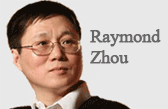Way forward for new leadership
By Dan Steinbock (chinadaily.com.cn) Updated: 2012-12-02 19:35China will continue to rebound in the short term but its challenges will increase in the medium term. With re-forms, though, China's new leadership can build on the country's huge long-term growth potential.
Some observers believe China's growth prospects will decline dramatically, plunging to 4-5 percent in the next decade. Others argue that, with economic development, some deceleration is inevitable, but growth would remain around 6-8 percent in the coming decade.
So how can China sustain its growth in such a challenging international environment? As former general secretary of Communist Party of China Hu Jintao said at the 18th Party Congress, China should double its 2010 GDP and per capita income for both urban and rural residents by 2020. This was the first time per capita income was included in the country's 2020 blueprint.
After being appointed Hu's successor, Xi Jinping said: "Our people love life and expect better education, more stable jobs, better income, more reliable social security, medical care of a higher standard, more comfortable living conditions, and a more beautiful environment."
Under Xi, the new leadership is likely to move toward vital structural reforms. Such changes are predicated on political consensus and strong enforcement. Liberal reforms require tough hands. For instance, the appointment of Vice-Premier Wang Qishan to head the anti-corruption campaign signals a new momentum.
Like former president Jiang Zemin and former premier Zhu Rongji, the new leadership will support market forces. And like President Hu Jintao and Premier Wen Jiabao, they will seek to bridge the income gap.
If efforts are not made to achieve equity in wealth distribution, growth will foster polarization and contribute to instability. Without growth, welfare cannot be created, let alone sustained. A "more balanced, coordinated and sustainable" China will thus need growth to sustain equity, and equity to sustain growth. In that case, how will the new leadership proceed?
In January and February, the central government moved toward a mini-economic stimulus package — a broad array of fiscal and monetary policies, cuts in interest rates and reserve ratios, a slate of infrastructure projects, tax relief, subsidies, and investment projects among provinces and State-owned enterprises.
Though the deepening US stagnation and the escalation of the eurozone debt crisis still had a negative effect on April data, the accelerated mini-stimulus policies' impact was clear in the third quarter. And in the fourth quarter, the recovery is spreading across the Chinese economy.
Now the 7.5 percent annual growth is well within target and could be exceeded — at about 8.2 percent in 2012 and 8-9 percent in the coming years. That, in turn, will strengthen the starting point of the new Chinese leadership in March 2013.












